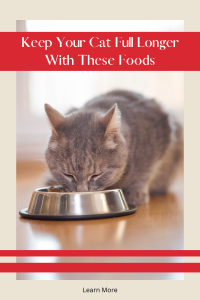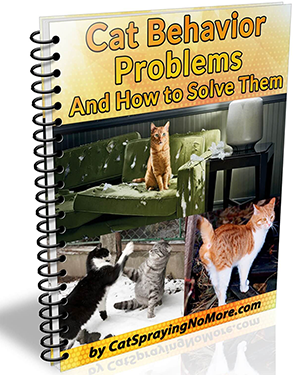Keep Your Cat Full Longer with These Foods: A Guide to Satisfied Felines
Is your cat a constant food beggar, even after a meal? Do they seem perpetually hungry, leading to overeating or unwanted weight gain? You’re not alone. Many cat owners face the challenge of a seemingly insatiable feline appetite. The good news is that by making smart choices about the types of food you offer, you can help keep your cat feeling fuller for longer, promoting better health, a healthy weight, and a more content companion.
The key to feline satiety lies in understanding a cat’s natural dietary needs and how different macronutrients affect their hunger cues. Cats are obligate carnivores, meaning their bodies are designed to thrive on a diet primarily composed of animal protein and fat, with very limited carbohydrates.

Here are the food characteristics and specific ingredients that can help keep your cat satisfied and less prone to persistent hunger:
1. Prioritize High-Quality Animal Protein
Protein is the cornerstone of a cat’s diet and plays a crucial role in satiety. Protein takes longer to digest than carbohydrates, helping your cat feel full and satisfied for extended periods. Look for cat foods where a named animal protein (like chicken, turkey, salmon, or beef) is the very first ingredient.
- Why it works: High-quality animal protein provides the essential amino acids cats need while signaling to their brain that they’ve consumed adequate nutrients.
- What to look for: Foods with 30-50% protein content on a dry matter basis. Avoid foods with excessive plant-based proteins as primary sources, as these are less bioavailable for cats.
2. Embrace Moisture-Rich Wet Food
One of the simplest and most effective ways to increase satiety and overall health in cats is to incorporate more wet food into their diet. Wet food, by its nature, has a high water content (typically 70-80%), which adds volume to the stomach without adding excessive calories.
- Why it works: The high moisture content helps fill your cat’s stomach, creating a feeling of fullness. It also contributes significantly to hydration, which is vital for kidney and urinary tract health, particularly in indoor cats.
- What to look for: Canned or pouched wet foods with high-quality animal protein as the main ingredient. Gravies and broths can further enhance the filling effect.
3. Choose Moderate, Healthy Fats
While often feared for their calorie density, healthy fats are an essential part of a cat’s diet and contribute to satiety. Fats are calorie-dense, providing concentrated energy, and they slow down digestion, helping to prolong the feeling of fullness.
- Why it works: Fats provide a sustained energy release and promote a feeling of satisfaction.
- What to look for: Foods with moderate fat levels (around 15-25% on a dry matter basis) from animal sources like poultry fat or fish oil. Omega-3 fatty acids (DHA, EPA) found in fish oil also offer anti-inflammatory benefits.
4. Opt for Low Carbohydrate Formulas
Cats have a limited physiological need for carbohydrates. Diets high in simple carbohydrates can lead to rapid spikes and drops in blood sugar, potentially contributing to feelings of hunger shortly after eating. Excess carbs are also readily stored as fat, increasing the risk of obesity.
- Why it works: Limiting carbohydrates helps prevent blood sugar rollercoasters, leading to more stable energy levels and a more consistent feeling of fullness.
- What to look for: Cat foods with carbohydrates typically under 10-15% on a dry matter basis. Avoid foods with large amounts of corn, wheat, soy, or other starchy fillers.
5. Consider Added Fiber (in Moderation)
While cats don’t need a lot of fiber, a moderate amount can aid digestion, help regulate blood sugar, and contribute to a feeling of fullness. Certain types of fiber can also help manage hairballs.
- Why it works: Fiber adds bulk to the stool and can help slow down digestion.
- What to look for: Small amounts of ingredients like psyllium husk, beet pulp, or pumpkin in the ingredient list. Overdoing fiber can dilute nutrient absorption, so moderation is key.
Beyond the Bowl: Feeding Strategies
Even with the right food, how you feed your cat can impact their satiety. Consider using puzzle feeders or slow-feeder bowls to make mealtime more engaging and prolong the eating experience. Dividing daily portions into two or three smaller meals can also help manage hunger throughout the day.
By focusing on high-quality, animal-based proteins, moisture-rich wet foods, healthy fats, and low carbohydrates, you can help your cat feel truly satisfied after their meals, leading to a healthier weight, fewer food-related pleas, and a happier cat overall. Always consult with your veterinarian to tailor dietary advice to your cat’s specific health needs and activity level.

Leave a Reply